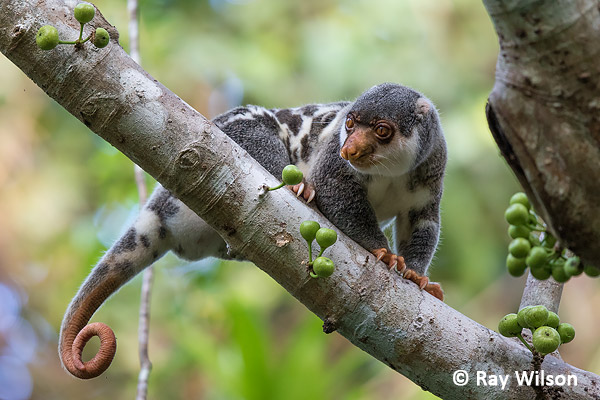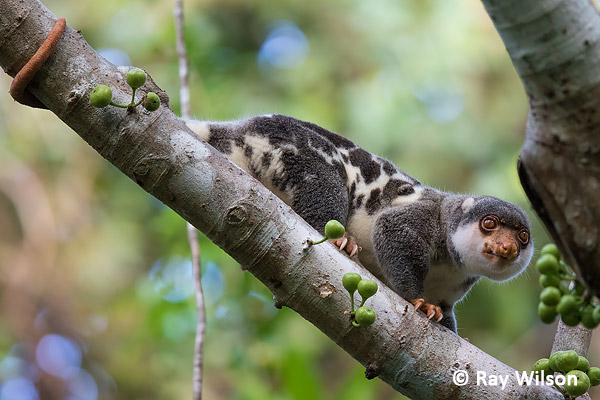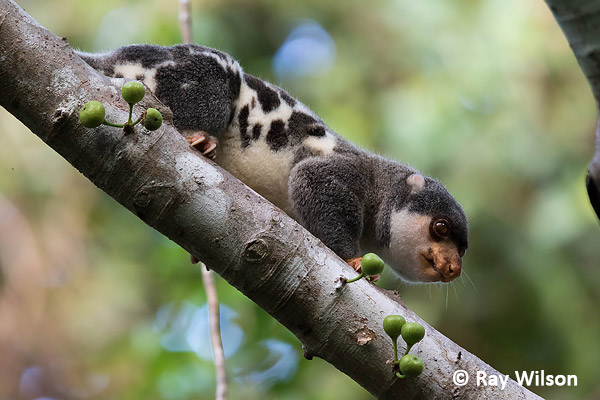
- Home
- Photography Tours
- Diary / Blog
- Galleries
- Foreign Trips
- Tasmania 2016
- NE Queensland 2016
- Western Alps 2016
- NE Spain 2016
- Australia's Wet Tropics 2015
- Australia's Top End 2015
- SW Australia 2015
- Switzerland 2015
- Andalucia 2015
- Belize 2015
- Australia 2014
- Switzerland 2014
- Belize 2014
- Bahama Islands 2014
- Switzerland 2013
- Ecuador 2012-2013
- Florida 2011-2012
- Vancouver Island 2011
- Australia 2010
- Peru 2008
- Bulgaria 2007
- Lesvos 2006
- California 2006
- New Zealand 2005
- Extremadura 2005
- Goa, India 2004
- The Gambia 2003
- About
October 2016
Cape York, QLD, Australia
Part 1
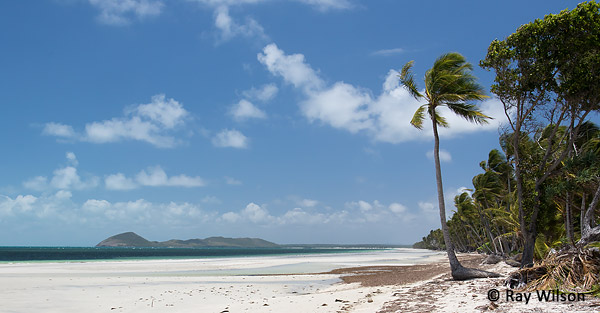
Chilli Beach, Iron Range National Park
I took a short break from the Atherton Tablelands at the end of October to make the trek up to Iron Range National Park (730km north of Atherton on the Cape York peninsula), where a number of far north specialities can be found although, as it turned out, getting decent views of most of them was far from easy and birding in the dense rainforests was incredibly frustrating at times.
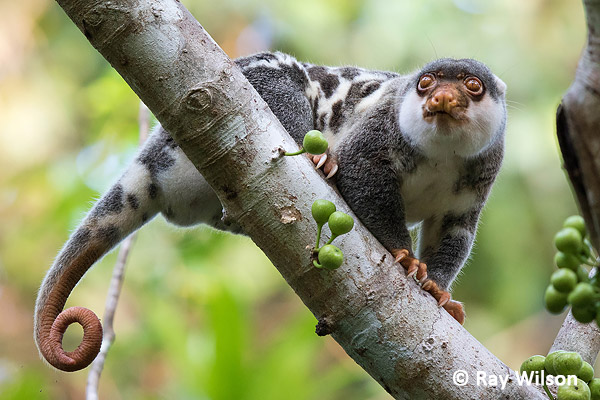
male Australian Spotted Cuscus (Spilocuscus nudicaudatus)
The highlight of the trip was undoubtably the excellent views I had of a male Spotted Cuscus at 7.30am one morning. It hung around in the fig tree for about half an hour before slowly moving off through the branches towards it daytime resting spot.
male Australian Spotted Cuscus (Spilocuscus nudicaudatus)
Cuscus are usually nocturnal and spend the day resting on branches or in thick clumps of foliage, and are only rarely active so late after sunrise as this one was. It certainly makes photographing it a lot easier when you've got a decent amount of light!
male Australian Spotted Cuscus (Spilocuscus nudicaudatus)
The Australian Spotted Cuscus is endemic to the rainforests of the Cape York peninsula and although it is usually regarded as being a subspecies of Common Spotted Cuscus (S. maculatus) found in New Guinea, HMW (Handbook of the Mammals of the World vol.5. del Hoyo et al.), the taxonomy that I follow on this site, states it is better treated as a full species.
male Australian Spotted Cuscus (Spilocuscus nudicaudatus)
A female Spotted Cuscus also made daily appearances in a fig tree at Chilli Beach each evening just before sunset.
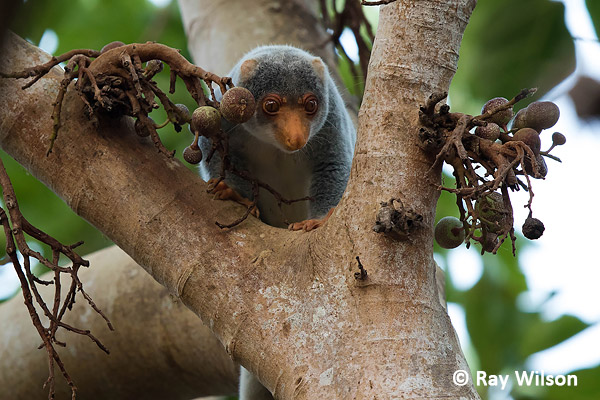
female Australian Spotted Cuscus (Spilocuscus nudicaudatus)
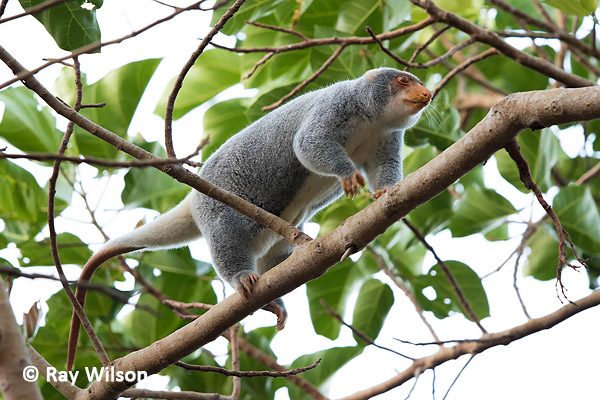
female Australian Spotted Cuscus (Spilocuscus nudicaudatus)
Finding Eclectus Parrots was made easier by being told of the location of a nest by one of the rangers. Getting a clear view of the nest from the roadside was not easy, but I managed to find a large enough window in the vegetation for a reasonably clear shot as the female valiantly defended her nest from a Sulphur-crested Cockatoo that was trying to usurp her.
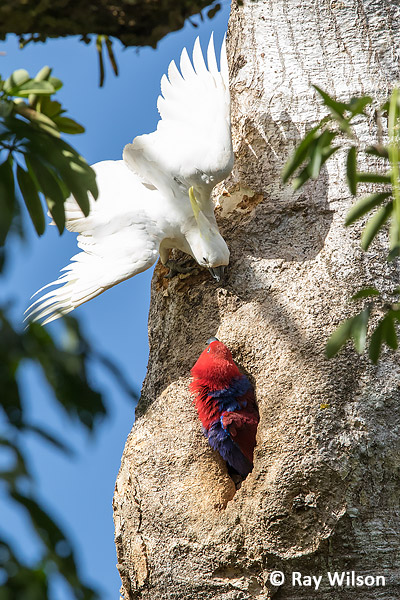 |
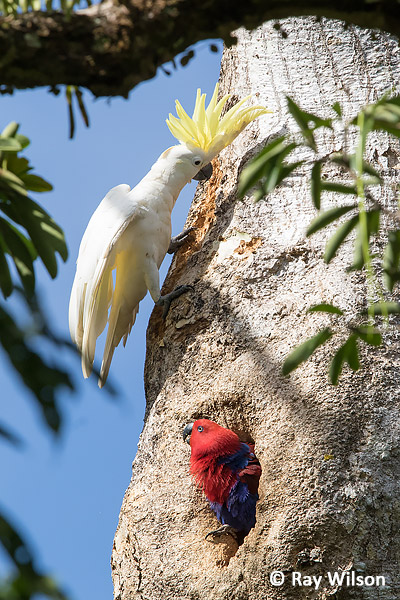 |
The Eclectus Parrot is unusual in that it is the female that has the brighter colouration, with the males being a uniform grass green.
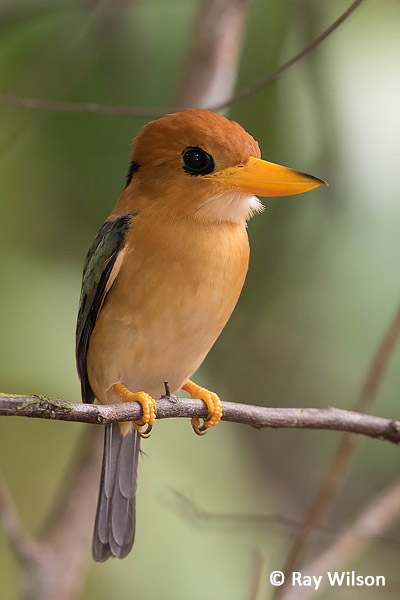 |
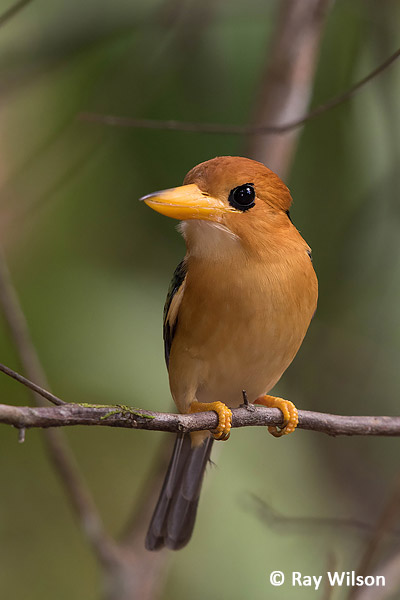 |
Yellow-billed Kingfisher (Syma torotoro)
Yellow-billed Kingfishers could frequently be heard calling but getting a view of one was not so easy and the individual above was the only one I saw.
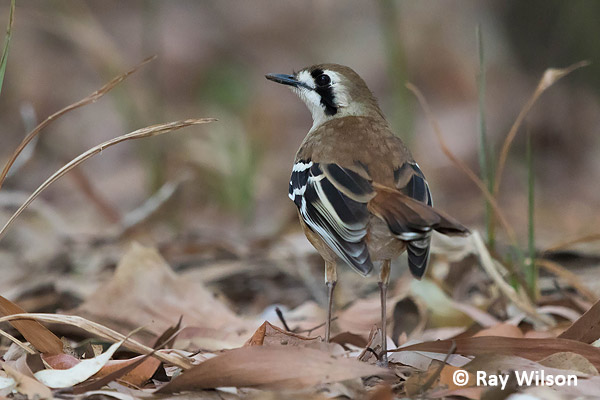
Northern Scrub-robin (Dymodes superciliaris)
The shy Northern Scrub-robin is quite rare in Australia and is restricted to a few islolated areas of rainforest on the Cape York peninsula where it forages among the leaf litter for insects.
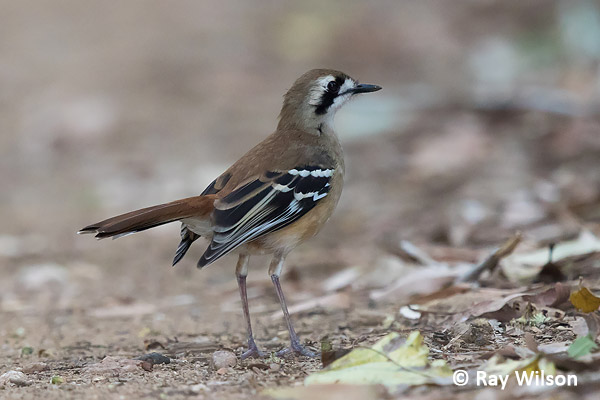
Northern Scrub-robin (Dymodes superciliaris)
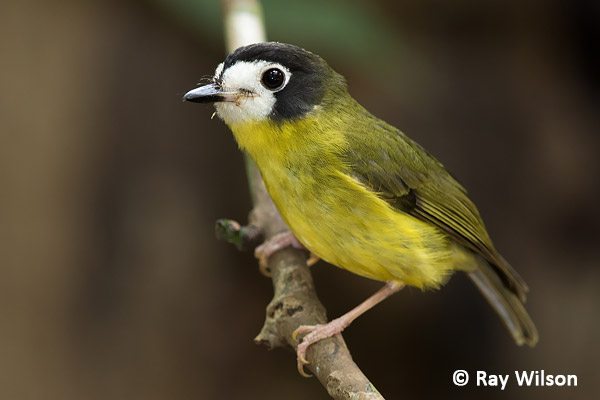
White-faced Robin (Tregellasia leucops)
As with many of the Australasian robins, White-faced Robin is a quite confiding species and will often perch on branches very close to you, probably in the hope of you disturbing insects that it can prey on...
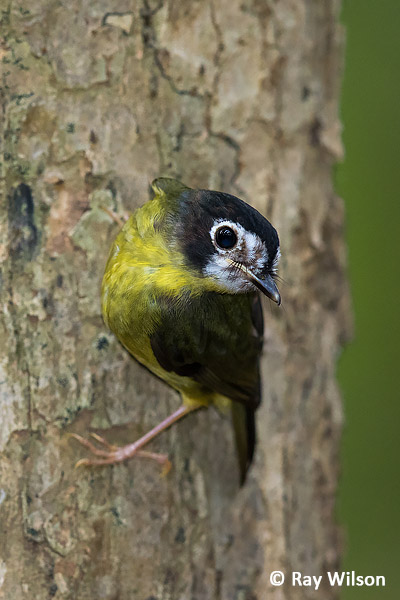
White-faced Robin (Tregellasia leucops)
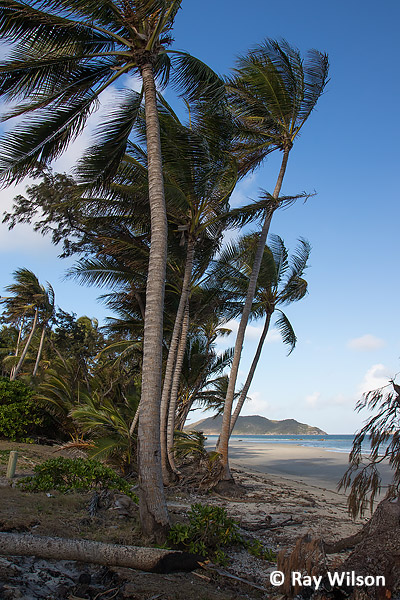
Chilli Beach, Iron Range National Park |
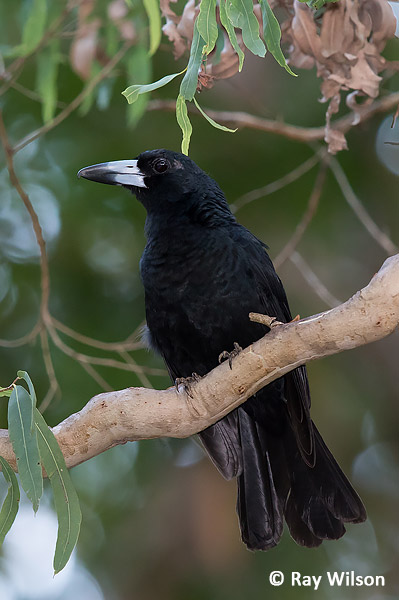
Black Butcherbird (Strepera fuliginosa) |
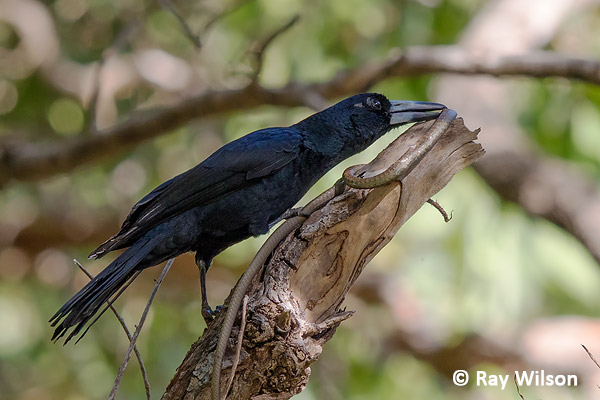
Black Butcherbird (Strepera fuliginosa) eating a tree snake
Black Butcherbirds mainly eat insects but also tackle larger animals such as snakes and small mammals. When the captured prey is too large to swallow whole, the butcherbird either wedges it into a crack in a branch (as demonstrated here) or impales it on a spike to help make dismemberment of the prey easier.
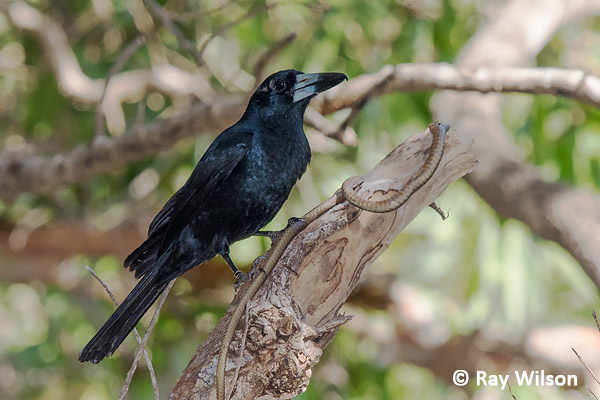
Black Butcherbird (Strepera fuliginosa) eating a tree snake
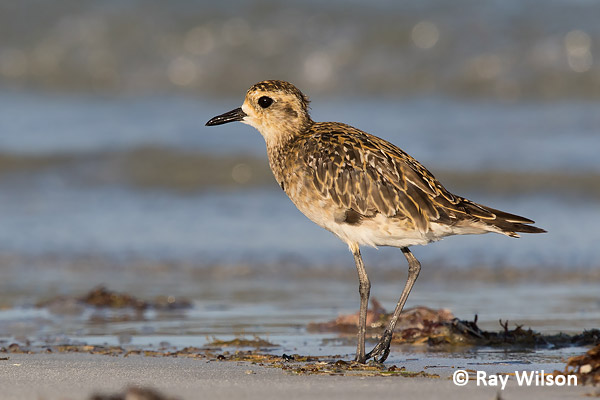
Pacific Golden Plover (Pluvialis fulva)
A few shorebirds could be seen along the shoreline. Although most of these were far too distant for photography, this Pacific Golden Plover was quite confiding and the incoming tide pushed it close enough towards me for some almost full-frame shots.
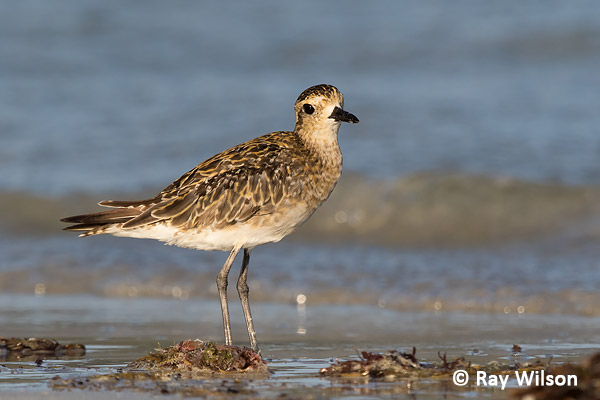
Pacific Golden Plover (Pluvialis fulva)
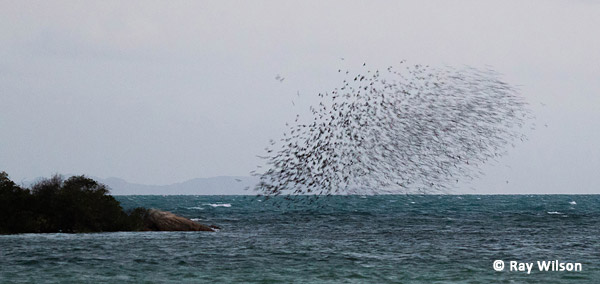
Metallic Starling (Aplonis metallica) murmuration
After sunset, as the last light of day rapidly fades, large flocks of Metallic Starlings can be seen whirling about over the sea before they settle to roost on an offshore island.

Metallic Starling (Aplonis metallica) murmuration
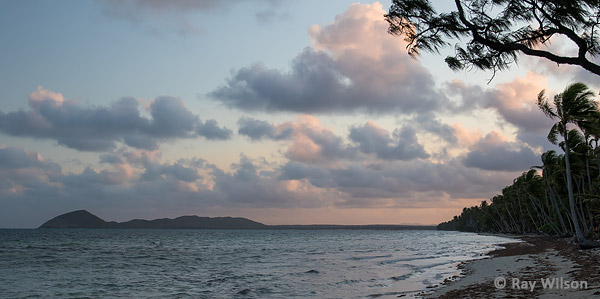
Chilli Beach, Iron Range National Park
Ray Wilson owns the copyright of all images on this site.
They may not be used or copied in any form without prior written permission.
raywilsonphotography@googlemail.com
